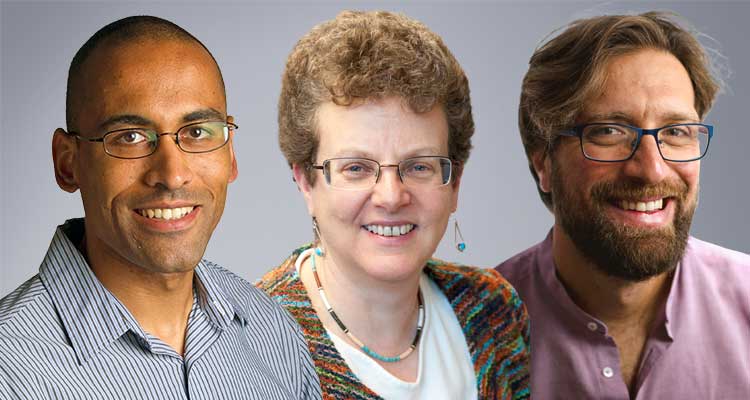Designing Self-Adaptive Next Generation RF Receivers for Heavily Crowded Electromagnetic Environments

ECE Associate Professor Marvin Onabajo, Professor Miriam Leeser, and Assistant Professor Cristian Cassella were awarded a $750K NSF grant for “Advancing Coexistence through a Cross-Layer Design Platform with an Adaptive Frequency-Selective Radio Front-End and Digital Algorithms.”
Abstract Source: NSF
As the crowding of the frequency spectrum continues, it becomes increasingly important to create new devices, circuits and computational algorithms with the ability to adaptively suppress unwanted electromagnetic interference during the reception and processing of wireless signals. This project is centered around the realization of a development platform that can enable transceivers for wireless communication to be designed across different disciplinary boundaries. The design platform will allow the prototyping of new devices and circuits, together with new reconfigurable computing and wireless communication algorithms. The research aims to lay the groundwork for enhanced radio frequency (RF) communication systems that make use of real-time tuning to adapt to different spectrum environments for higher interference tolerance, as well as to provide design techniques and tools that improve the coexistence of wireless devices in a broad range of scenarios. By enabling more compact devices with higher performance, interference robustness and digitally-controlled tuning for reliability, this research will help improve the well-being of our society that increasingly relies on wireless devices and systems for a plethora of needs. The project will also establish a foundation for the training of graduate and undergraduate students who can apply and develop cross-layer design techniques involving devices, circuits and computational algorithms.
This research will provide a platform and first hardware prototypes for the co-design of next-generation RF receivers with the ability to suppress both in-channel and adjacent channel interferers without compromising the reception of desired signals that may have much lower power than the interferers. Recent progress in the design of time-modulated devices has led to the possibility to form frequency selective limiters (FSLs), which can intrinsically distinguish and attenuate interference characterized by power levels higher than a certain threshold. However, to realize FSLs that can protect receiver modules of various existing radios, these components require new monolithically integrated resonators with high quality factors (Q > 2,000) and with varactors having low loss-tangents, wide tuning ranges and low capacitance values. By taking advantage of the acoustic properties of Aluminum Scandium Nitride (AlScN) thin-films and of the ferroelectric properties of Hafnium Zirconium Oxide (HZO) atomic layers, the research addresses this fundamental challenge through the development of fully integrated microelectromechanical system (MEMS) FSLs that can be manufactured with complementary metal-oxide-semiconductor (CMOS) process compatibility, and that can be deliberately tuned by analog CMOS circuits towards accomplishing the best possible digital signal processing results when operating in crowded spectral environments. The AlScN/HZO components will be co-developed with custom-designed analog circuits to achieve adaptive characteristics based on detected power levels, allowing to continuously optimize the signal processing quality at both device and system levels. To broaden the benefits across wireless system layers, digital coexistence algorithms and adaptive analog front-end circuits will be conceived to strategically tune the operating points of the FSLs and of the receiver circuits towards the highest communication quality. A prototyping platform with a reconfigurable field-programmable gate array (FPGA) will be constructed to develop the digital coexistence algorithms and apply them to Bluetooth Low Energy, Zigbee and Wi-Fi signals.